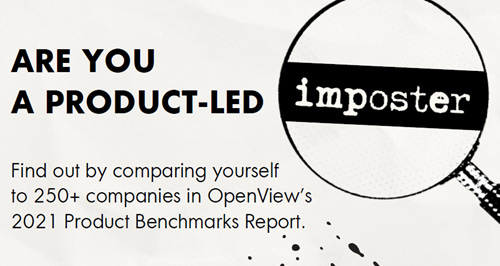7 new product-led insights
I'm breaking down OpenView's 2021 SaaS Product Benchmarks report
👋 Hi, I’m Kyle and welcome to my newsletter, Growth Unhinged. Every other week I I take a closer look at what drives a SaaS company’s growth. Expect deep dive takes on SaaS pricing, product-led growth, public company benchmarks, and much more.
This week OpenView launched our second annual SaaS Product Benchmarks to help operators improve their product performance and embrace product-led growth.
The report draws on data from 250+ companies (that’s up 70% over last year). Most respondents were in the expansion stage (48% had $1-10M in ARR), although there are also a good number of later stage companies in the mix (19% had over $30M in ARR).
You can’t miss the key headline: as PLG becomes trendy, product-led imposters are on the rise. I highly recommend exploring the full report to see for yourself.
As with any of these reports, there’s so much data that it can be easy to overlook some of the most interesting insights. Here are my top 7 takeaways you might’ve missed and what to do about it.
Keep reading with a 7-day free trial
Subscribe to Kyle Poyar’s Growth Unhinged to keep reading this post and get 7 days of free access to the full post archives.



